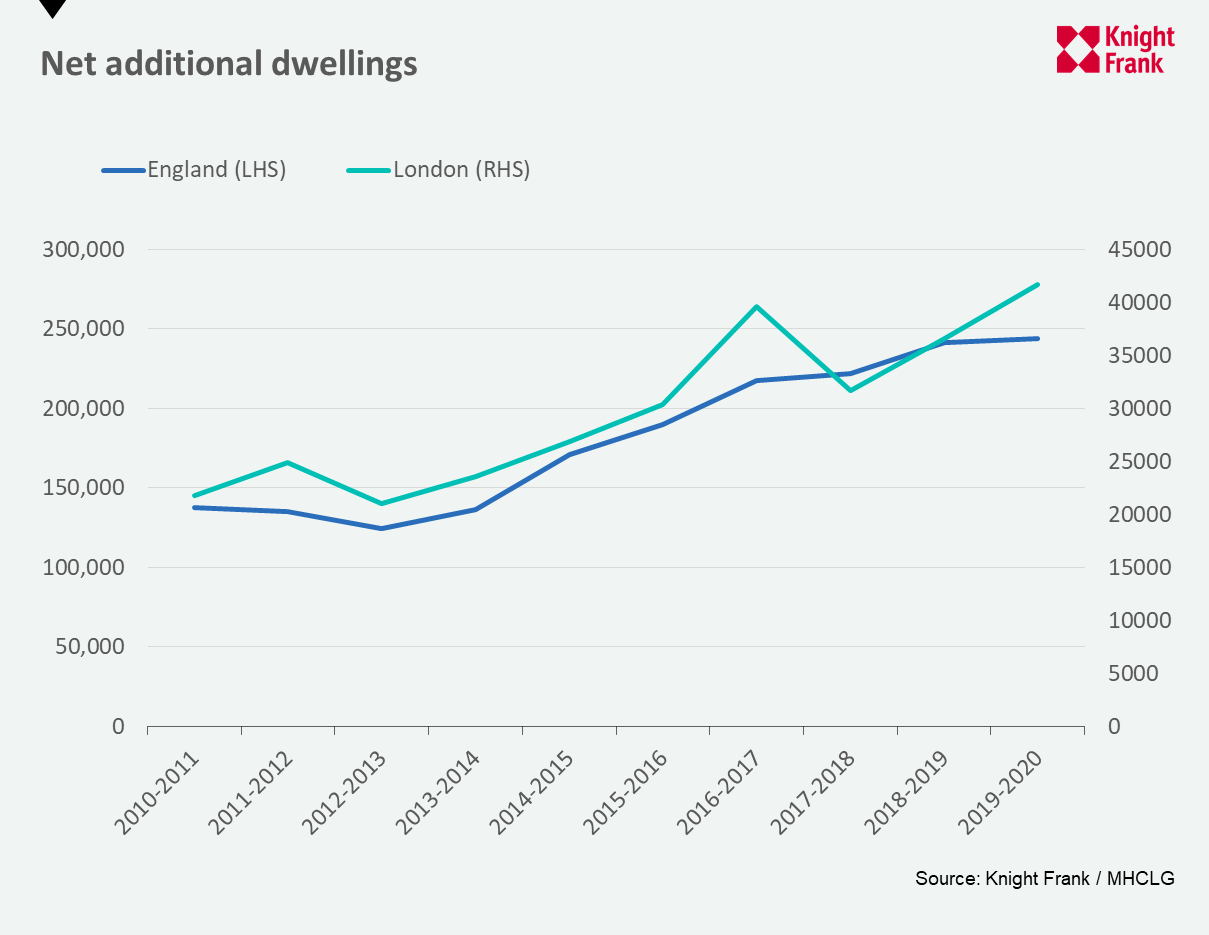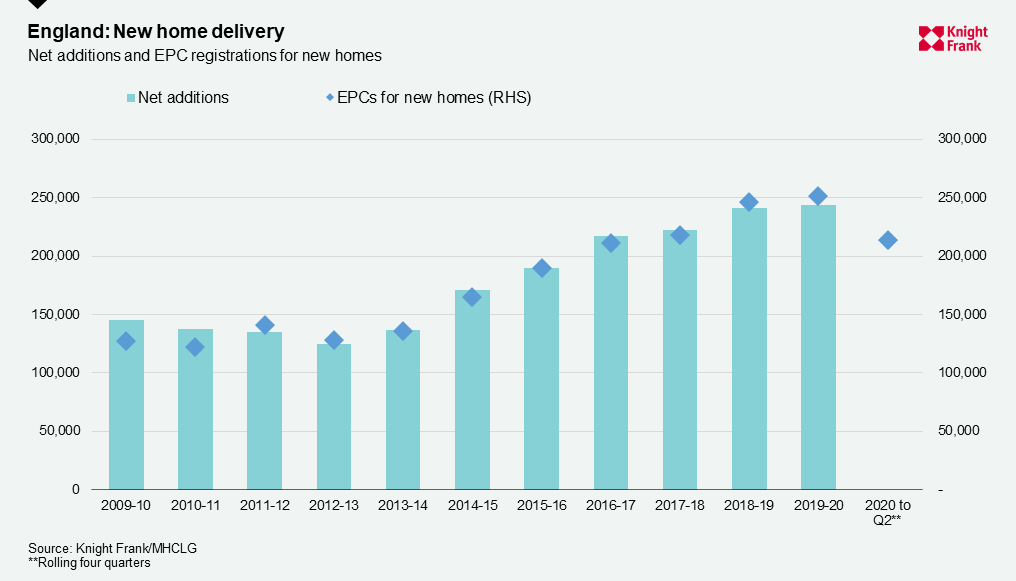Net additional dwellings rise 1% in 2019/2020 before Covid impact
It is widely accepted that the events of this year will inevitably lead to a slowdown in housing delivery. But before the outbreak of Covid-19 in March, completion volumes had been steadily ticking upwards and this is reflected in new housing supply data out this week.
2 minutes to read
Government “net additions” figures for the 12 months to 31 March 2020 found that 243,770 homes were added to supply in the year, up 1% from the 241,335 in the previous year (see graph), and the highest since this figure started being recorded in 1991/1992.
The figure includes a 3% rise in new build completions.
In London, 41,718 homes were added to supply, up 14% from 36,618 the previous year. The increase in delivery is still below Mayor Sadiq Khan’s revised ten-year new homes target, which came down from 65,000 to 52,000 a year in December 2019, in line with recommendations from planning inspectors reviewing City Hall’s draft new London Plan.

Other forward-looking indicators that we monitor had already suggested the latest net supply figure would likely representing a peak in new homes delivery.
In May, we wrote that the number of Energy Performance Certificates (EPCs) awarded for new homes in England reached just over 250,000 over the 12 months to 31 March 2020 (see chart). However, in the second quarter just 28,498 EPCs were allocated to new homes in England, 57% lower than Q2 2019.

Boris Johnson, in his election manifesto last year, promised to increase housebuilding levels by delivering an average of 300,000 new build homes a year by the mid-2020s.
Despite the challenges ahead, this clearly remains a priority for the government. Last month, housing secretary Robert Jenrick affirmed the government "will listen" to views on where new homes should be built but won't cut its target to build 300,000 homes a year.
And on Wednesday, Chancellor Rishi Sunak unveiled a £7.1bn National Home Building Fund during his Spending Review to help “unlock” up to 860,000 homes.
Supply slowdown
But coronavirus will inevitably lead to a slowdown in new homes delivery, at least in the short term. The building hiatus during the first lockdown, which saw some but not all housebuilders opt to shutter sites, is set to impact delivery as firms catch up after construction halts and potentially face supply chain disruptions and risks to their labour force.
Our expectation is that private housing delivery across the UK in 2020 will be around 35% less than what it would otherwise have been.
Furthermore, although the government’s plans to reform the planning system are designed to boost the supply of new build homes, this could also lead to a hiatus in the market as housebuilders and developers take a ‘wait and see’ approach until the new rules are clear. Uncertainty over the government’s Planning White Paper has already led to delays in the adoption of some council’s Local Plans.